Eyepieces Guide
Magnification power
The magnification power refers to how much larger an object will appear compared to the naked eye. Higher magnification power allows for a more detailed view, especially for small or distant objects. However, it is essential to strike a balance because excessive magnification can result in a loss of field of view and clarity.
In the low-budget range, mixed research and stargazing eyepieces offer magnification power ranging from 4x to 15x. Some examples include the Celestron 94153-A Zoom Eyepiece (8mm to 24mm) and the Orion 05270 Expanse Eyepiece Set (6mm, 9mm and 15mm). For intermediate budget range, eyepieces offer magnification ranging from 20x to 50x. Popular choices include the Gosky TMB Planetary Eyepiece (4mm, 9mm, and 12.5mm) and the Meade Instruments Series 5000 Ultra Wide Angle Eyepieces (6.7mm, 8.8mm, and 14mm). In the high-end market, premium eyepieces provide magnification power of 60x and higher. Examples include brands like Televue with their Nagler 31mm and Ethos 21mm illustrative zoom eyepieces. Remember that the magnification power is just one aspect to consider when selecting the best eyepiece for your needs.
Field of view
Field of view is the amount of area you can see through the eyepiece at a fixed magnification. It is typically measured in degrees or arc minutes. A larger field of view allows you to see a wider area of the night sky, making it easier to locate celestial objects and navigate through the stars.
There are various eyepieces available on the market that offer a wide field of view. Some popular options include the Televue Ethos eyepieces, which provide a wide 100° apparent field of view and have focal lengths ranging from 3.7mm to 21mm. Another great choice is the Explore Scientific 100° Series eyepieces that also offer wide fields of view, with focal lengths ranging from 3.5mm to 25mm. For those on a budget, the Meade Series 4000 Super Plossl eyepieces are a reliable option with an apparent field of view of 52° and come in various focal lengths such as 6.4mm, 9.7mm, and 12.4mm.
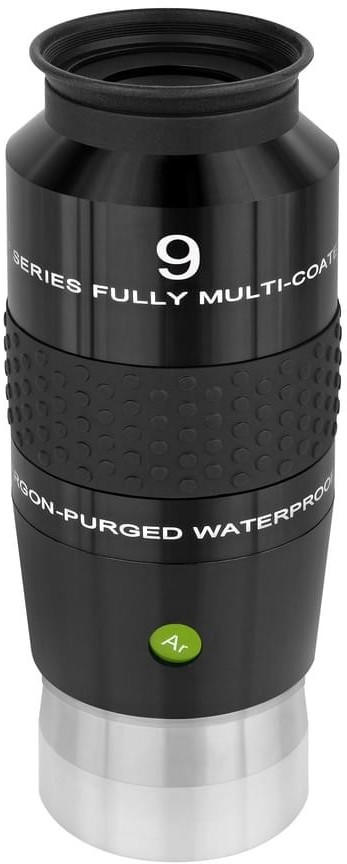
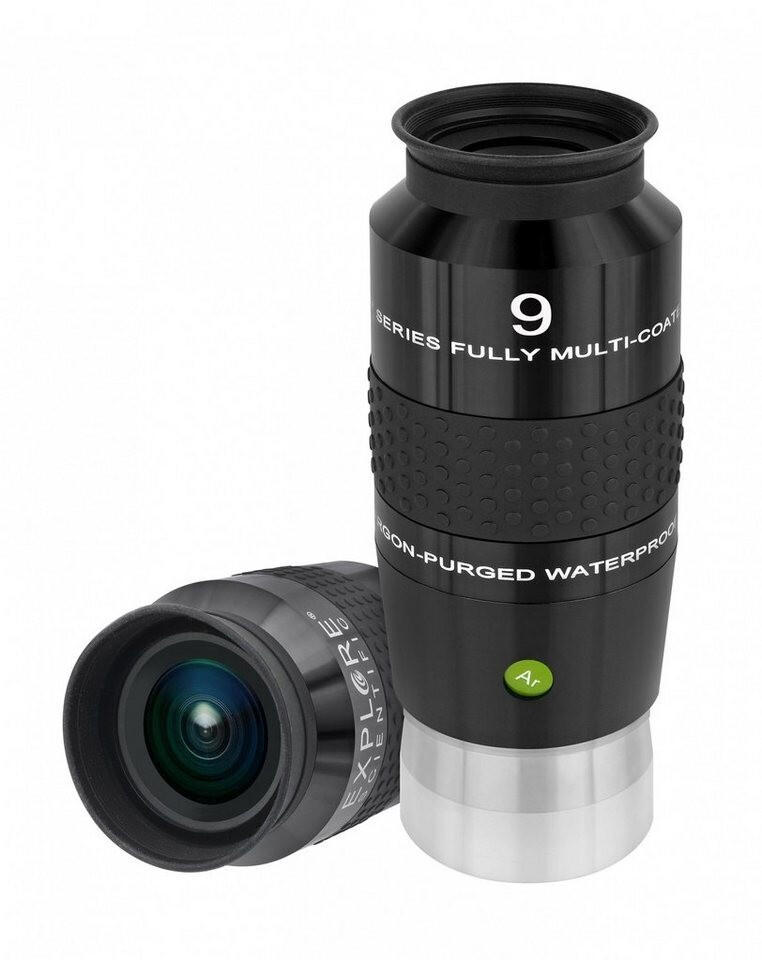
Exit pupil size
Exit pupil refers to the diameter of the beam of light that exits from the eyepiece and enters your eye. The size of the exit pupil can affect brightness and image quality. A larger exit pupil lets in more light, making the view brighter, while a smaller exit pupil may lead to a dimmer view.
For those who enjoy stargazing or observing low-light objects, eyepieces with a larger exit pupil are ideal. Examples of eyepieces with a larger exit pupil are the Celestron X-Cel LX Series Eyepiece, which offers a 20 mm focal length and a 60° apparent field of view, resulting in a 7 mm exit pupil, and the Orion Expanse Telescope Eyepieces Series, with options such as a 9 mm focal length that provides a 6 mm exit pupil. These eyepieces are well-suited for deep sky observation, as they deliver a brighter view of celestial objects. For daytime observation or high magnification needs, eyepieces with a smaller exit pupil, such as the TeleVue Delos Eyepieces Series with focal lengths ranging from 3.5 mm to 17.3 mm and exit pupil sizes between 2 mm and 4.9 mm, can offer sharper views and improved resolution.
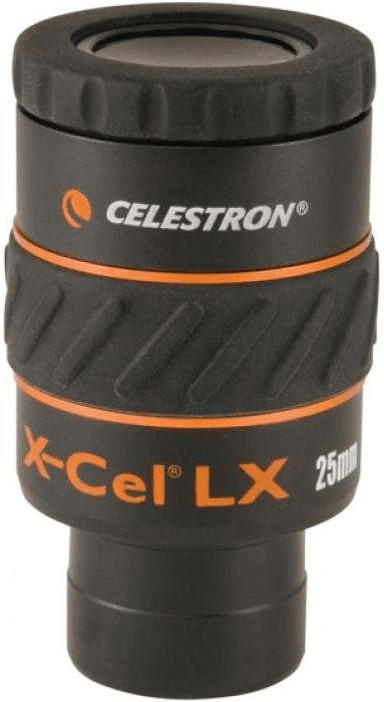
Eye relief
It refers to the distance between your eye and the eyepiece lens to achieve a full field of view. A larger eye relief allows for a more comfortable viewing experience, especially for eyeglass wearers or those who prefer to wear their glasses while observing. Some eyepieces with long eye relief even provide a wider field of view, allowing you to take in more of the night sky at once. If eye relief is a priority for you, options like the Celestron X-Cel LX Series Eyepieces ranging from 16mm to 25mm or the Televue Delos Eyepieces offering a range from 3.5mm to 17.3mm would be great choices. These eyepieces offer generous eye relief between 20mm to 25mm, providing a comfortable viewing experience without compromising on image quality.
In terms of eye relief, eyepieces on the market can be categorized into different segments based on their specifications. Generally, long eye relief eyepieces are favored by observers who wear eyeglasses, whereas short eye relief eyepieces are suitable for those who observe without glasses. In the category of long eye relief eyepieces, products like the Explore Scientific 82 Degree Series with eye relief of 14mm to 18mm or the Meade Series 5000 Ultra-Wide-Angle Eyepieces with eye relief of 15mm to 20mm offer a comfortable viewing experience and a wide field of view. For short eye relief eyepieces, options like the Orion Expanse Eyepieces with 18mm to 20mm eye relief or the Baader Hyperion Modular Eyepieces offering 10mm to 20mm eye relief are popular choices.

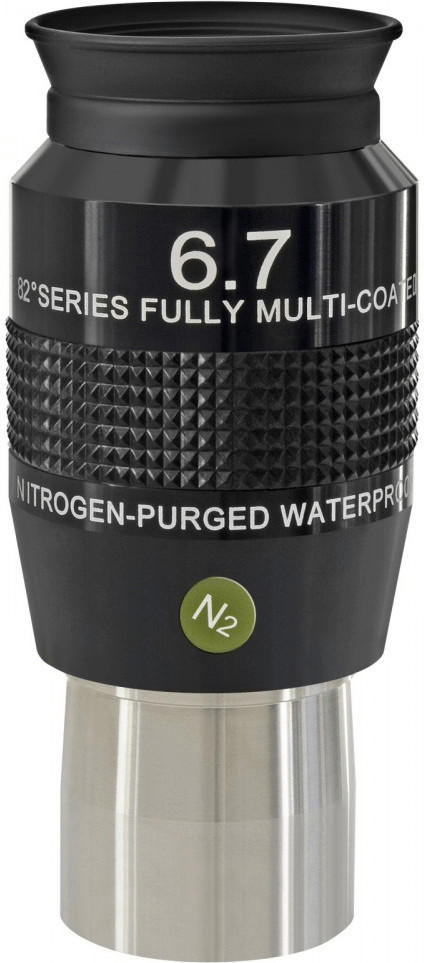
Coating type
Coating Type:
When it comes to choosing the right eyepiece, the coating type plays a crucial role in improving the overall viewing experience. One of the most popular coating types is the fully multi-coated (FMC) coating. These eyepieces have multiple thin layers of anti-reflective coatings on all air-to-glass surfaces, increasing the amount of light transmission and minimizing internal reflections. They offer clear and sharp views with vibrant colors. Examples of eyepieces with FMC coating include the Celestron X-Cel LX Series Eyepieces and the Meade Series 5000 Ultra Wide Angle Eyepieces.
Another common coating type to consider is the multi-coated (MC) coating. These coatings have multiple layers of anti-reflective coatings on one or more air-to-glass surfaces, providing improved image brightness and contrast. While not as advanced as fully multi-coated, they still offer good performance at a more affordable price point. Some popular examples of eyepieces with MC coating are the Orion Stratus Wide-Field Eyepieces and the Explore Scientific 82° Series Eyepieces.


Lens material
The lens material determines the overall quality and clarity of the image produced by the eyepiece. There are different lens materials available on the market, each with its own unique properties.
One popular choice is the ED (Extra-low Dispersion) glass lenses, which effectively reduce chromatic aberrations to provide sharp and color-accurate images. For example, the Celestron 93432 Luminos 19mm Eyepiece features a high-quality ED glass lens that minimizes color fringing and distortion for exceptional views.
Another lens material often used is Optical Glass, which ensures excellent light transmission and minimizes reflection and ghosting. A superb example is the Televue 11 mm Delite Eyepiece, which boasts high-quality optical glass lenses to deliver sharp views with minimum light loss.
On the lower end of the price range, there are eyepieces with BK7 Glass lenses. Though not as high-end as ED or Optical Glass, BK7 Glass still provides decent image quality. The Gosky Super Plossl 25mm Eyepiece is an affordable option that utilizes BK7 glass lenses, ensuring good image clarity and solid performance.

It is essential to prioritize eyepieces with ED or Optical Glass lenses for superior image quality and brightness. However, if budget is a constraint, eyepieces with BK7 glass lenses can still offer satisfactory views for beginners or casual observers. Remember to consider other factors as well to make an informed decision on the best eyepiece for your specific needs.
Focal length
The focal length determines the magnification and field of view you can expect when using an eyepiece. The longer the focal length, the lower the magnification but the wider the field of view. On the other hand, shorter focal lengths provide higher magnification but with a narrower field of view.
There are many eyepieces available on the market that cater to different needs and budgets. For those seeking a wide field of view and comfortable viewing, the Televue Nagler 31mm eyepiece offers an impressive 82-degree apparent field of view and a focal length of 31mm. If you are interested in planetary observations and high magnification, the Televue Ethos 3.7mm and 4.7mm eyepieces are options with a focal length that enables great detail and clarity during close-up observations. Additionally, the Celestron X-Cel LX series provides various focal lengths, ranging from 5mm to 25mm, ensuring that there is an option available for a range of observing requirements. Remember, the choice of focal length should be based on your individual preferences and what you wish to observe.
Compatibility with telescope/binoculars
Not all eyepieces are created equal, and various instruments may require specific types or sizes for optimal performance. For instance, the Celestron 9mm Plossl Eyepiece is designed to work seamlessly with Celestron telescopes, providing a 52-degree apparent field of view and offering excellent contrast and sharpness. Another great option is the Orion Edge-On Planetary Eyepieces, which come in various focal lengths and are highly recommended for use with Orion telescopes due to their long eye relief and specially designed ghost-free lens coatings. Ensure compatibility by checking the specifications and product information before purchasing any eyepiece.
Examples of products based on compatibility:
- Celestron 9mm Plossl Eyepiece
- Orion Edge-On Planetary Eyepieces
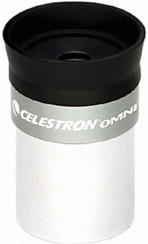
Size and weight
The dimensions and weight of an eyepiece can significantly impact the overall comfort and stability of your viewing experience. One example of a lightweight and compact eyepiece is the Celestron 93428 X-Cel LX 1.25-Inch Eyepiece. It weighs only 9.6 ounces and has a compact size of 1.5 x 1.5 x 3.9 inches, making it easy to handle and carry during outdoor activities. Another option is the Televue DeLite 13mm Eyepiece which weighs 8 ounces and has dimensions of 5 x 4 x 3 inches. These lightweight eyepieces ensure that you can enjoy long observing sessions without experiencing fatigue or strain on your telescope's mount.
Portability
If you often travel or hike to different observation sites, compact and lightweight eyepieces will be your best option. For example, the Celestron X-Cel LX series offers a great combination of portability and high-quality performance with their 1.25-inch barrel diameter. These eyepieces are designed with a long eye relief for comfortable viewing and a wide field of view for immersive observations.
Another option for lightweight and portable eyepieces is the Meade Series 4000 Super Plossl series, available in both 1.25-inch and 2-inch barrel diameters. These eyepieces feature a 4-element design, multi-coatings for enhanced image contrast, and provide a comfortable eye relief for extended viewing sessions. With their compact size, you can easily carry them in your backpack without adding much weight to your gear.
For those looking for even more compactness, high-quality zoom eyepieces like Baader Hyperion Zoom are a great choice. These eyepieces offer a versatile range of magnifications and are designed for various telescopes with their 1.25-inch barrel diameter. The Baader Hyperion Zoom combines excellent field correction and a wide 68-degree apparent field of view, giving you the convenience of multiple eyepieces in a single compact unit.
Weather resistance
Weather-resistant eyepieces are designed to withstand moisture, fog, and other environmental elements, ensuring optimal performance and longevity. Some notable options to consider include the Celestron 93231 8 to 24mm 1.25-inch Zoom Eyepiece, which features a waterproof and fog-proof design that enhances durability and prevents build-up of moisture. Another great option is the Baader Planetarium Hyperion 68-degree Modular Eyepiece. It offers comprehensive weather resistance with a waterproof and nitrogen-filled housing, ensuring clear views in all weather conditions. Both eyepieces are popular choices among astronomers and guarantee exceptional weather resistance.
Image quality
The clarity, sharpness, and overall detail that can be observed through your telescope are greatly influenced by the quality of the eyepiece. One example of an eyepiece that is known for producing exceptional image quality is the Tele Vue Nagler Type 6 13mm Eyepiece. This eyepiece incorporates a large 82° apparent field of view and utilizes multicoated optics that enhance contrast and minimize internal reflections. Additionally, its 6-element design helps deliver impeccable edge-to-edge sharpness, allowing users to observe intricate details in celestial objects.
Another example in the premium range is the Televue Ethos 13mm Eyepiece, which offers a remarkable 100-degree apparent field of view and a comfortable eye relief. This eyepiece boasts 7 optical elements and is equipped with a multi-coated proprietary group of materials known as "FK61" glass. The result is breathtaking, high-resolution images with exceptional sharpness throughout the field. Furthermore, Tele Vue DeLite 9mm Eyepiece is an excellent mid-range option that delivers stunning image quality. Featuring an apparent field of view of 62°, multi-layer anti-reflection coatings, and 4 optics, this eyepiece provides impressive contrast and resolution for an immersive viewing experience.
Anti-reflective properties
These properties help reduce excessive glare and improve light transmission, resulting in clearer, brighter images. One example of an eyepiece with exceptional anti-reflective properties is the Celestron X-Cel LX Series Eyepiece. It features fully multi-coated optics, which means that every air-to-glass surface of the lens is coated with layers of anti-reflective coatings. Additionally, the Tele Vue Ethos SX 4.7mm Eyepiece is worth considering, as it also boasts excellent anti-reflective properties thanks to its anti-reflection threads built into the lens mounting barrels. Both of these eyepieces are designed to minimize unwanted reflections, ensuring you have a remarkable viewing experience.

Lens design
Various lens designs offer different benefits, which can enhance the viewing experience. One popular lens design is the Plossl eyepiece, known for its wide field of view and low distortion. They generally have a four-element design and are suitable for various types of telescopes. One exceptional Plossl eyepiece is the Celestron 93230 10mm Plossl Eyepiece, known for its razor-sharp images and generous 52-degree apparent field of view.
Another lens design to consider is the wide-angle or ultra-wide eyepieces. These provide an even broader field of view, allowing you to observe larger areas of the sky. They usually offer a wide apparent field of view, such as the Explore Scientific 82-degree eyepiece series, providing immersive views of celestial objects. These eyepieces often have a complex lens design with multiple elements to reduce aberrations and maintain sharpness across the entire field. Separating wide-angle eyepieces into two categories, there are premium options like the Tele Vue Ethos series, with an astonishing 100-degree apparent field of view, and more budget-friendly alternatives like the Orion Expanse series, offering good quality performance at a more affordable price point.
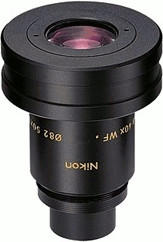


Twist-up eyecups
Twist-up eyecups are a popular choice as they offer adjustability for different viewing preferences and can be easily twisted up or down to accommodate eyeglass wearers or individuals without glasses. The Carl Zeiss Conquest HD is an excellent example of eyepieces with twist-up eyecups, offering adjustable eye relief from 14mm to 17mm and a wide field of view of 140 meters at 1,000 meters. Another option is the Nikon Monarch 7, which features a comfortable long eye relief of 16.4mm and turn-and-slide rubber eyecups with multi-click adjustments, allowing users to set the eyecup position according to their needs.

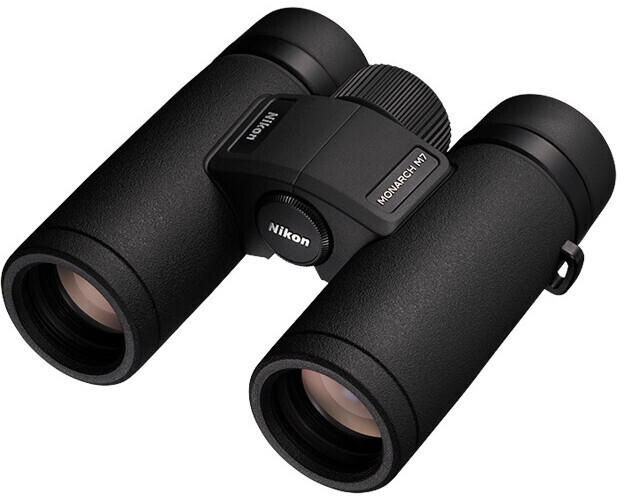
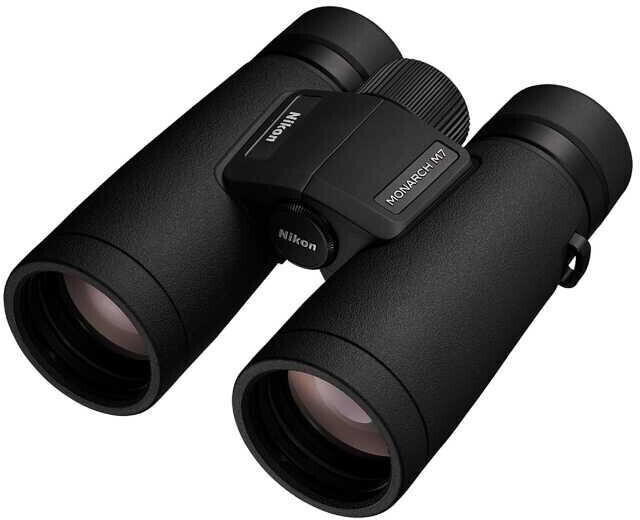
Diopter adjustment
This feature allows the user to focus the lens of the eyepiece to match the visual ability of their eyes. Typically, this adjustment is measured in increments of positive and negative values, allowing individuals with either farsightedness or nearsightedness to achieve a clear and sharp image. It is important to note that eyepieces with a wide range of diopter adjustment options are preferable as it ensures they can accommodate a wider range of visual impairments.
One notable product that offers excellent diopter adjustment capabilities is the Nikon PROSTAFF 3S 8x42 Binoculars. These binoculars feature a diopter adjustment range from -3 to +3, catering to a wide variety of eyesight issues. Similarly, the Vortex Optics Diamondback HD 8x42 Binoculars provide a diopter adjustment range from -2 to +2 for precise focusing capabilities. For those with serious vision impairments, the Zeiss Victory SF 8x42 Binoculars boast a remarkable diopter adjustment range of -4 to +4, ensuring they cater to diverse visual needs. With these products, users can adjust the diopter settings to match their respective eyesight, ensuring optimal image quality and comfortable viewing experiences.
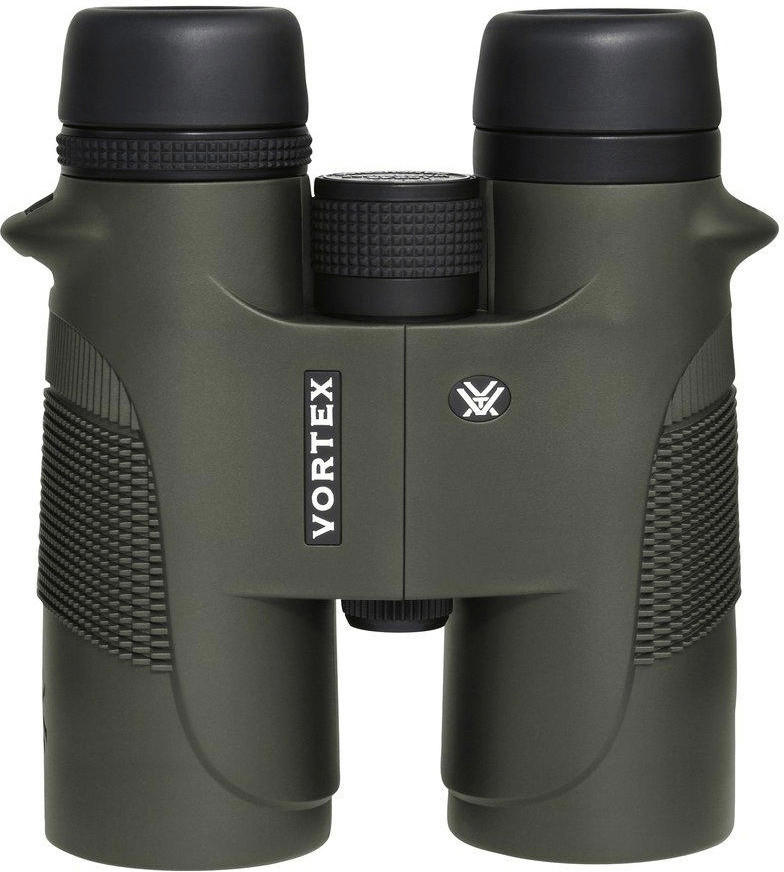
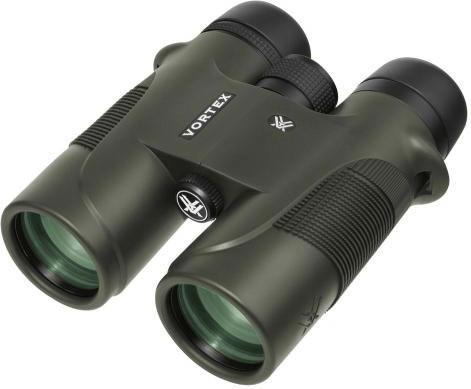
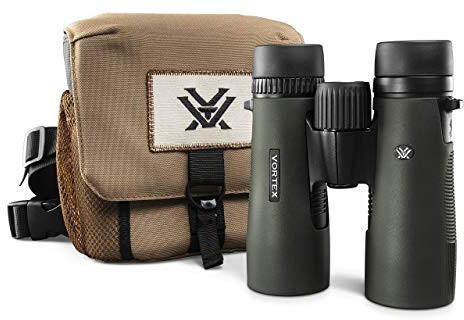
Interchangeability with other eyepieces
This feature allows you to interchange different eyepieces with your telescope, giving you versatility in your observing experience. One great example of eyepieces that offer excellent interchangeability is the Celestron X-Cel LX series. These eyepieces come in various focal lengths, ranging from 2.3mm to 25mm, offering a wide range of magnification options. They are designed with a 60-degree apparent field of view, providing you with a comfortable viewing experience. Another option to consider is the Televue Delos series, which boasts a 72-degree apparent field of view and a unique adjustable eyeguard for added comfort.
In terms of product segments, there are mainly two types of eyepieces on the market: standard and wide-field. Standard eyepieces typically provide lower magnification and are often suited for casual astronomical observations. Notable examples in this segment include the Explore Scientific 68° Series and the Orion Sirius Plossl eyepieces. On the other hand, wide-field eyepieces offer higher magnification and a greater field of view, making them ideal for deep space exploration. Products such as the Baader Hyperion Widefield and the Meade Ultra Wide-Angle series fall into this category. Regardless of your specific needs, ensuring that your chosen eyepieces are interchangeable will allow you to have a flexible and customized observing experience.

Image stabilization
One such product that stands out in this regard is the Celestron 93428 X-Cel LX Series Eyepiece which features Celestron’s X-Cel LX coating for maximum light transmission and enhanced contrast. Additionally, this eyepiece comes with a comfortable 20mm eye relief and a wide 60-degree apparent field of view, offering improved stability and an immersive viewing experience. Another noteworthy option is the Pentax SMC XW 30 Eyepiece, known for its built-in image stabilization technology and extraordinary visual quality. This eyepiece provides a generous 70-degree apparent field of view, a staggering 20mm eye relief, and utilizes extra-low-dispersion glass to deliver exceptional sharpness and high-resolution views. With its image stabilization feature and impressive specifications, it is an ideal choice for astronomy enthusiasts seeking maximum stability in their observations.

Maximum eye temperature tolerance
Different eyepieces are designed with varying material compositions and coatings that determine their heat resistance. For individuals who enjoy extended viewing sessions with higher heat-emitting telescopes, it is crucial to select eyepieces with higher temperature tolerance levels.
Among the eyepieces popular in this category are the Celestron E-Lux Series Eyepieces. These eyepieces are built with a multi-coating optical system that enhances light transmission and contrast while effectively managing temperature to avoid discomfort or potential damage. Another notable option is the Tele Vue Delos Series Eyepieces, crucial for individuals seeking exceptional image quality without sacrificing comfort. With a tight temperature specification of -30 to +50 degrees C, these eyepieces are perfect for prolonged stargazing sessions, as their multi-coated optics effectively mitigate potential heat concerns. For astrophotography enthusiasts, considering eyepieces such as the Explore Scientific 92-degree Series is advisable. These premium eyepieces boast a temperature tolerance between -20 and +60 degrees C while providing an immersive wide field of view for capturing stunning celestial images.

Image distortion
Image distortion can occur when the edges of the field of view appear blurry or distorted, leaving the center of the image intact. To ensure the highest clarity, it is important to opt for eyepieces that minimize image distortion. One excellent example is the TeleVue Nagler line of eyepieces. The TeleVue Nagler 16mm Type 5 utilizes top-notch glass and a wide apparent field of view, resulting in highly corrected images without the common barrel distortion found in cheaper alternatives. Another great choice is the Celestron X-Cel LX series, with eyepieces like the 9mm model. These eyepieces feature extra-low dispersion glass to reduce chromatic aberration, contributing to sharper and more distortion-free visuals. Both of these eyepieces offer exceptional image quality and are ideal for avid stargazers.
Color accuracy
This refers to the ability of the eyepiece to reproduce colors accurately and faithfully without distorting or altering them. For those who prioritize color accuracy, it is recommended to look for eyepieces that use high-quality glass materials and multi-coating technology to minimize chromatic and spherical aberrations that can impact color accuracy.
One example of an eyepiece that excels in color accuracy is the TeleVue Nagler Type 5 series. These eyepieces feature advanced multi-coating technology that ensures excellent color correction and high color fidelity across the entire field of view. They also use a combination of exotic glass elements and larger eye relief to provide sharp and true-color images with minimal color fringing. Another option is the Celestron X-Cel LX series, which employs extra-low dispersion (ED) glass elements to enhance color accuracy and contrast, resulting in vibrant and natural-looking views. These eyepieces also have a comfortable eye relief and a wide apparent field of view to enhance the overall viewing experience.
Light transmission efficiency
This refers to the proportion of the incident light that reaches your eye without scattering or reflections. Higher light transmission efficiency ensures brighter and clearer views through the eyepiece. One noteworthy example of eyepieces with exceptional light transmission efficiency is the Celestron X-Cel LX Series. These eyepieces are renowned for their fully multi-coated optics, which maximize light transmission for optimal brightness even in dim conditions. Another notable option is the Televue Ethos Eyepiece Series. These eyepieces feature a generous 100° apparent field of view and utilize state-of-the-art multi-layer coatings for excellent light transmission. Remember, higher light transmission efficiency leads to improved image quality and a more immersive stargazing experience.
Low light performance
First, focus on the eyepiece's aperture, measured in millimeters, which determines the amount of light that can enter. For example, the Tele Vue Nagler 82° Type 4 Eyepiece features a 4mm aperture, allowing for optimal light transmission in dark conditions. Another important factor is the eyepiece's focal length, measured in millimeters, which determines the magnification power. Consider the Explore Scientific 82° Ultra-Wide-Angle Eyepiece with a 14mm focal length, providing a clearer view in low light environments.
For those looking for eyepieces specifically designed for low light situations, one can find options that excel in this area. One group includes the Pentax XW Extra Wide Eyepieces, known for their exceptional low light performance thanks to their large 70° apparent field of view, as well as the Nikon Monarch 5 Eyepieces, boasting fully multicoated lenses for maximum light transmission. Each of these options ensures the best viewing experience even in challenging lighting conditions.


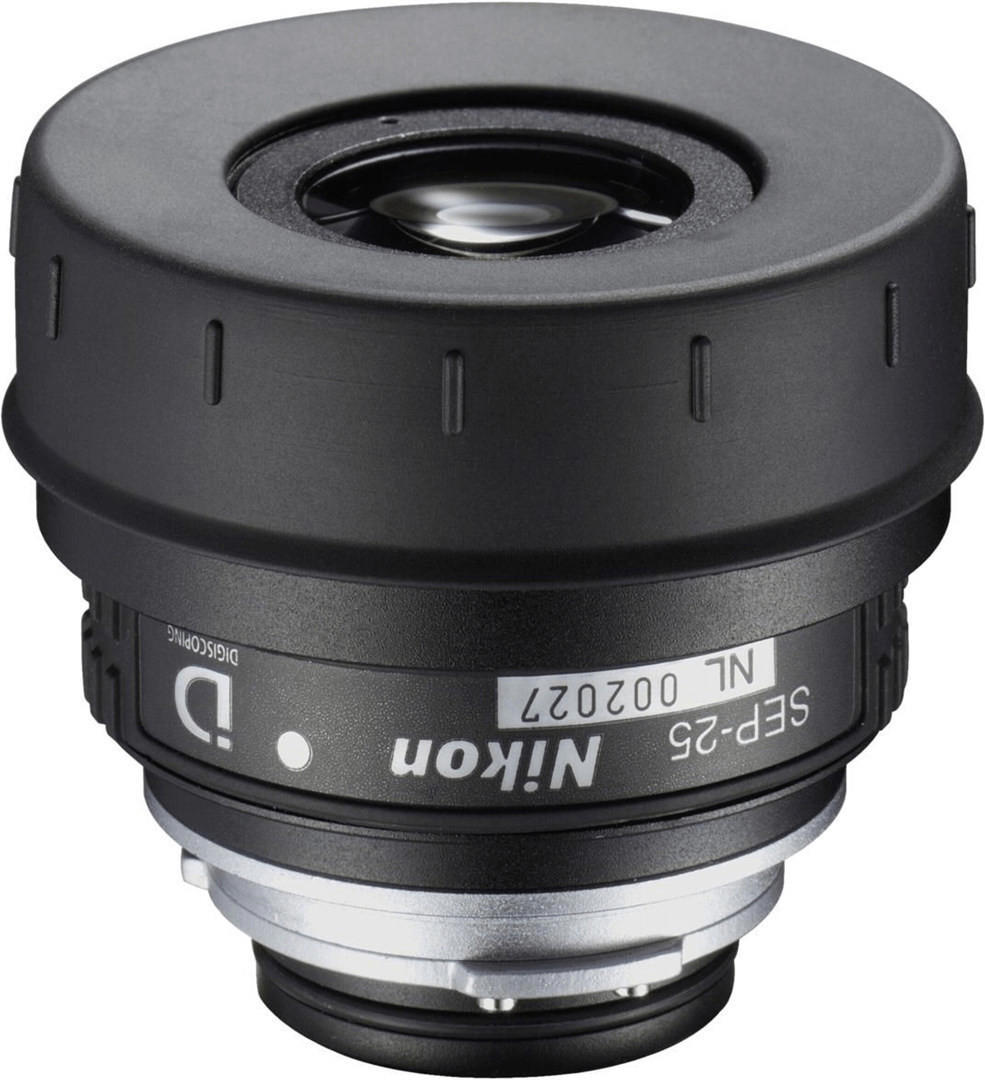
Lens diameter
Lens diameter refers to the size of the objective lens or primary mirror in your telescope or spotting scope. Generally, a larger lens diameter allows more light to enter the instrument, resulting in brighter and more detailed images.
Within the eyepiece market, there are different size options available. For telescopes, standard lens diameters range from 1.25 inches to 2 inches. The Celestron NexStar 6SE Telescope features a 6-inch lens diameter, which enables an impressive light-gathering capacity. Another option is the Orion SkyQuest XT8 Classic Dobsonian Telescope with its 8-inch lens diameter, allowing for exceptional clarity and resolving power. For those seeking a more compact choice, the Celestron TrailSeeker 65mm Spotting Scope provides a lens diameter of 65mm, offering a portable and versatile solution for birdwatching and nature observation. Remember, choosing an eyepiece with an appropriate lens diameter will significantly impact the overall visual experience.
Compatibility with filters
Filters are important tools for enhancing celestial observations by selectively blocking specific wavelengths of light. Eyepieces that offer filter compatibility add versatility to your viewing experience. One example of a versatile eyepiece that is filter-compatible is the Celestron X-Cel LX Series Eyepiece. This series of eyepieces boasts a wide field of view, fully multi-coated optics, and excellent eye relief. Another option to consider is the Explore Scientific 82° Series Waterproof Eyepiece. These eyepieces are designed with enhanced comfortable eye relief and a sizable field of view for easy object locating, making them an excellent choice for astronomers who frequently use filters.


Rubberized grip
A rubberized grip offers several advantages, such as providing a comfortable and secure hold, especially during extended viewing sessions or when operating in challenging weather conditions. One example of eyepieces that feature a rubberized grip is the Celestron X-Cel LX Series Eyepieces. These eyepieces not only offer a comfortable grip but also have a large eye relief of 16mm and a wide apparent field of view of 60 degrees, ensuring a comfortable and immersive viewing experience. Another option is the Baader Hyperion Eyepiece, which also boasts a rubberized grip along with adjustable eyecups that allow the viewer to optimize eye relief. These eyepieces come in a range of focal lengths, catering to different needs and budgets. Overall, having a rubberized grip enhances the handling experience and adds convenience to your astronomical observations.

Ease of installation
You want eyepieces that are user-friendly, allowing for a quick and hassle-free setup. One example of eyepieces that offer easy installation is the Celestron 1.25" Universal T-Adapter. This particular eyepiece features a threaded barrel that can be directly attached to your telescope, allowing for a simple installation process. Additionally, the Meade Instruments Series 4000 Super Plossl Eyepieces are designed with a smooth eyepiece barrel grip, ensuring easy installation and removal without requiring excessive force. These eyepieces come in varying focal lengths, catering to different magnification needs for optimal viewing experiences.
Availability of accessories (e.g., cases, covers)
These accessories play a crucial role in protecting your eyepieces and ensuring their longevity. It is advisable to opt for eyepieces that come with sturdy cases, specifically designed to fit and safeguard the respective eyepiece.
One notable example is the Celestron Eyepiece and Filter Kit. It includes several eyepieces, filters, and accessories for different astronomical applications. The kit comes with aluminum carrying cases that perfectly store and protect all the components included, not only providing convenience but also ensuring the safety of the eyepieces.
Another option is the Orion Deluxe Eyepiece Case and Accessory Kit. This kit features a deluxe case with modular foam-padded compartments that hold various eyepieces, filters, and other accessories securely. Its customizing ability allows you to tailor-fit the sections to accommodate your collection easily.
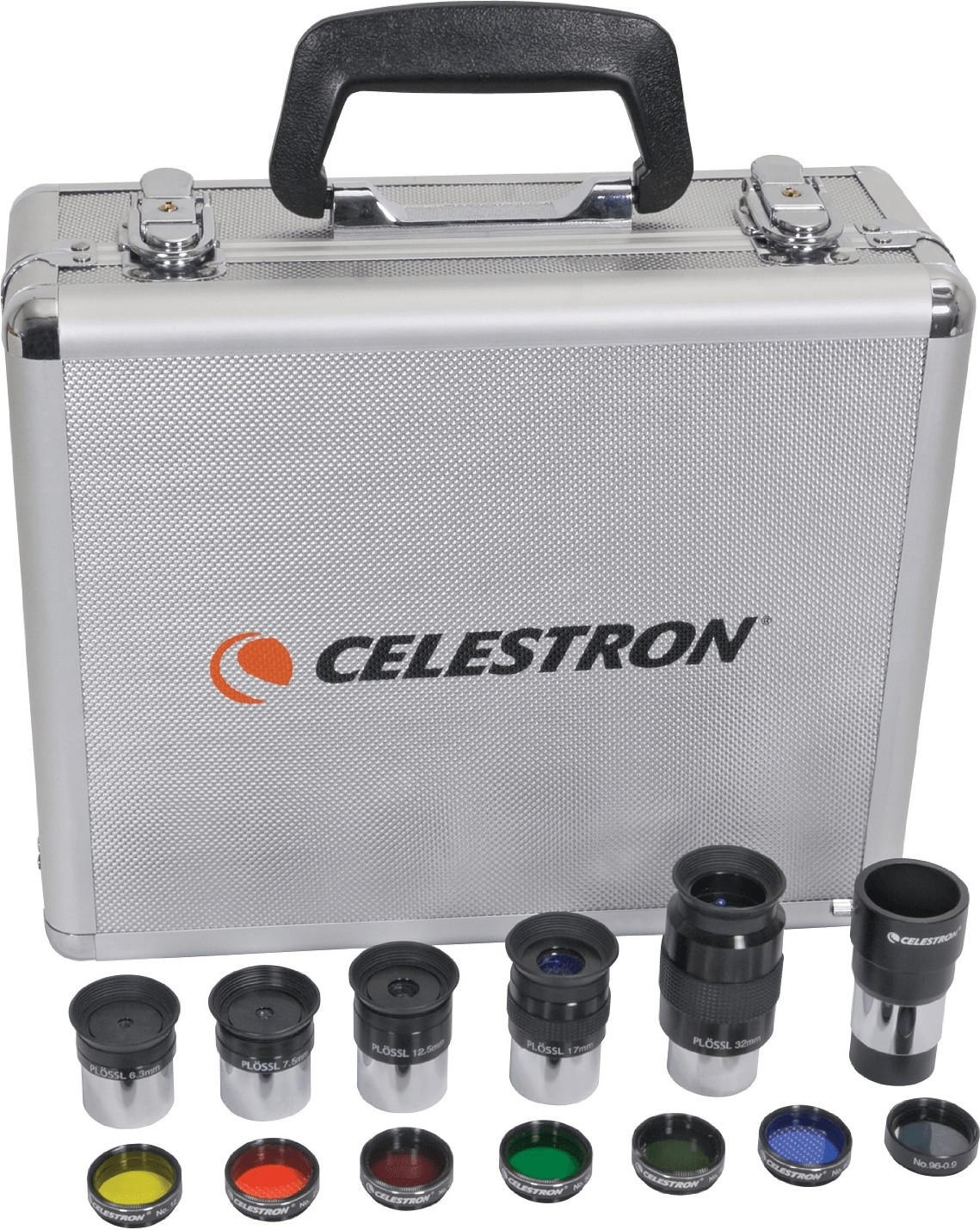
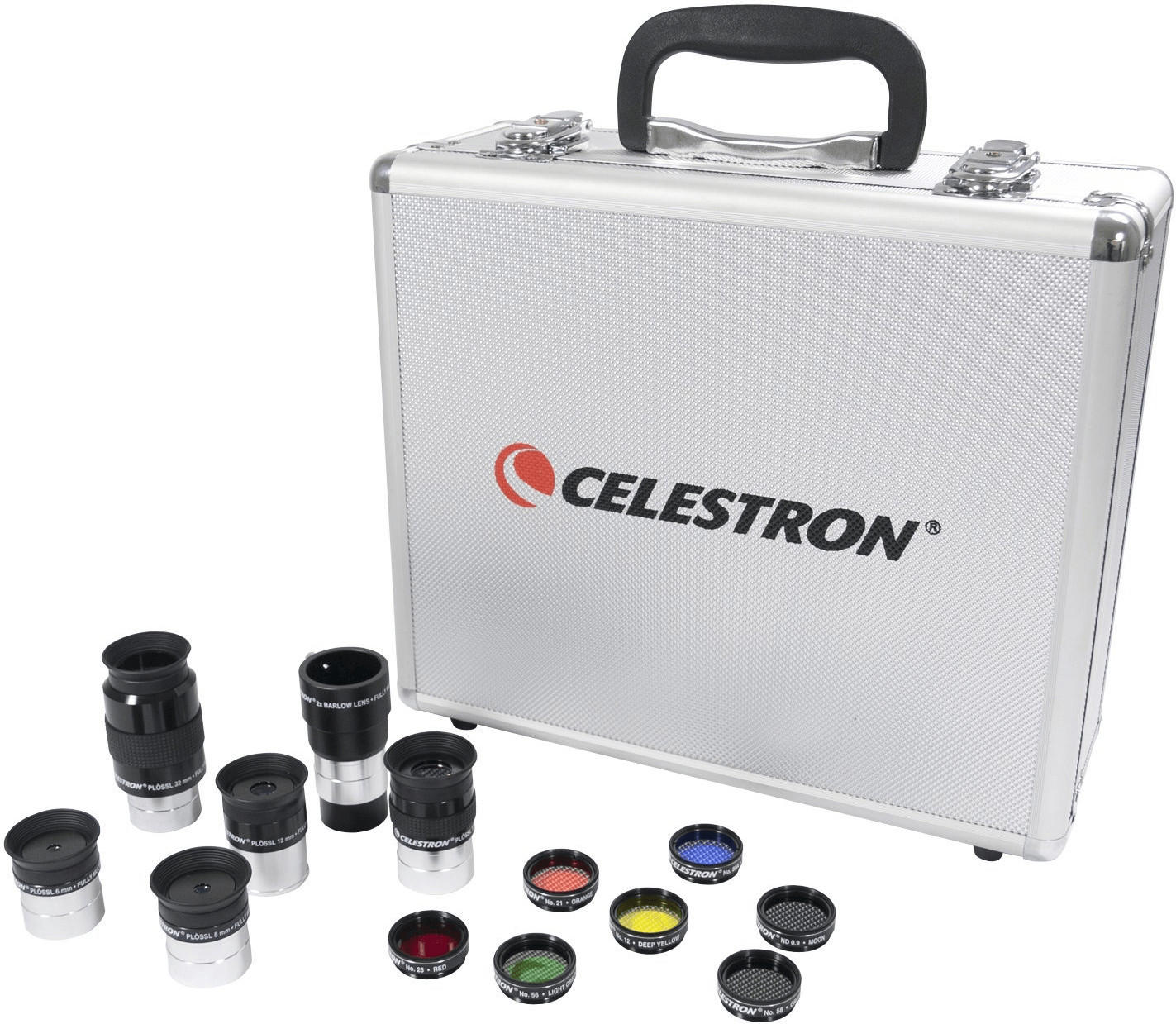
Opting for eyepiece models that come with these accessories can save you the hassle of finding suitable storage solutions.
Dark adaptation-friendly
A larger exit pupil allows more light to enter your eye, enhancing your ability to see in low light conditions and aiding dark adaptation. Eyepieces with large apparent field of view (AFOV) can also contribute to dark adaptation by providing a wider view of the night sky.
Some eyepieces known for their dark adaptation-friendly features include the Televue Ethos 21mm and the Explore Scientific 82° Series. The Televue Ethos 21mm features a substantial 33mm of eye relief and a 100° AFOV, ensuring a comfortable and immersive observing experience while aiding in dark adaptation. On the other hand, the Explore Scientific 82° Series offers eyepieces with a generous 18mm eye relief and 82° AFOV, providing excellent low-light visibility and preventing eyestrain during extended observing sessions.
Longevity and durability
Look for eyepieces that are built with high-quality materials and designed to withstand regular use over a long period of time. For instance, the Televue Delos eyepieces are renowned for their superior construction and longevity. These eyepieces feature an ultra-wide field of view, allowing for immersive observing experiences, and are made with high-grade, durable materials that ensure a long lifespan. Similarly, the Explore Scientific 82° Series eyepieces are constructed with precision-machined components and advanced optical elements, guaranteeing both durability and optimal performance. Available in various focal lengths, they provide a wide range of magnification options while maintaining a solid and enduring build. By choosing eyepieces such as these, you can ensure that your investment is a lasting one.
Price
The cost of an eyepiece can range from budget-friendly options to higher-end selections. In the lower price range, there are options such as the Celestron Omni Series Eyepieces, which offer quality views at an affordable price. They feature a four-element design with fully coated optics and come in a variety of focal lengths. Moving up in price, the Televue DeLite Eyepieces provide superior eye relief and a wide field of view with their six-element, fully multi-coated optics. For those looking for even higher performance, premium options like the Tele Vue Ethos SX Eyepieces deliver an impressive 110° apparent field of view and the outstanding edge-to-edge sharpness, completed by intricate multi-coatings and large eye lenses to reduce eye strain. Remember that the price of an eyepiece alone may not always indicate its overall quality, as other factors also play a role in achieving the optimal viewing experience.

Variety of brands
Each brand comes with its own pros and cons, which can impact your viewing experience. For example, Celestron is a well-known brand in the astronomy community, offering a range of eyepieces that are known for their high-quality optics. Their X-Cel LX line offers comfortable eye relief and wide fields of view, perfect for observing deep-sky objects. However, these eyepieces can be more expensive than others on the market.
On the other hand, Orion is another renowned brand that produces a variety of eyepieces for beginners and experienced astronomers alike. Their Expanse series offers affordable options while still maintaining good optical quality. These eyepieces provide a wide 66-degree apparent field of view, which is ideal for scanning the night sky. However, they might not have the same levels of comfort or high-end optics as more expensive brands.
In the mid-range segment, Meade offers eyepieces that strike a balance between affordability and performance. Their Series 4000 Super Plossls provide excellent image quality with a 52-degree apparent field of view. They are well-suited for both terrestrial and astronomical observations. However, the eye relief on these eyepieces might not be as generous as other brands, which might not be as comfortable for some users.
Remember, the variety of brands available means there are options to suit different preferences and budgets. Depending on your specific needs and requirements, researching and comparing different brands, such as Celestron, Orion, and Meade, will help you find the perfect eyepiece for your observing goals.